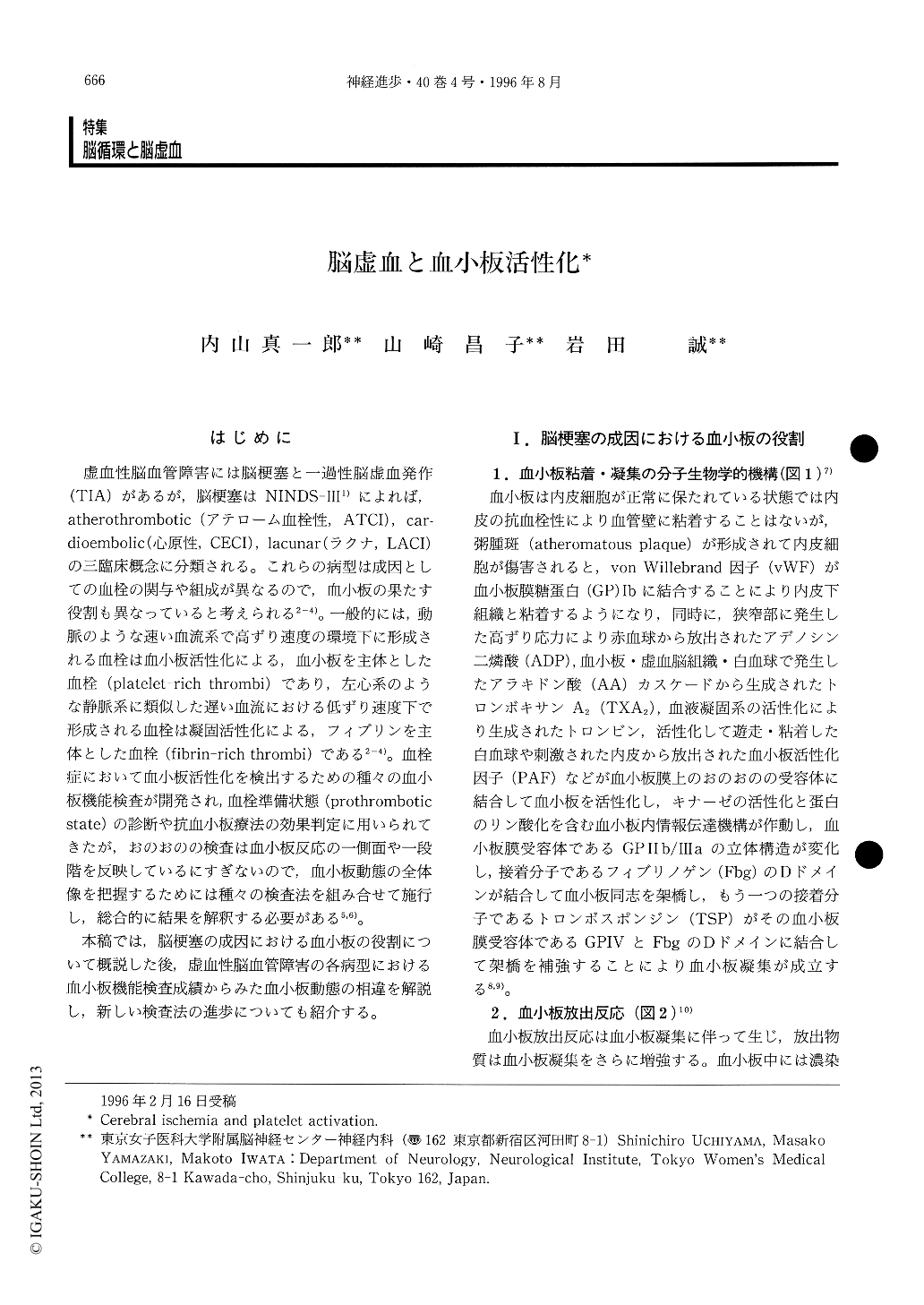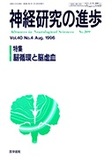Japanese
English
- 有料閲覧
- Abstract 文献概要
- 1ページ目 Look Inside
はじめに
虚血性脳血管障害には脳梗塞と一過性脳虚血発作(TIA)があるが,脳梗塞はNINDS-III1)によれば,atherothrombotic(アテローム血栓性,ATCI),cardioembolic(心原性,CECI),lacunar(ラクナ,LACI)の三臨床概念に分類される。これらの病型は成因としての血栓の関与や組成が異なるので,血小板の果たす役割も異なっていると考えられる2-4)。一般的には,動脈のような速い血流系で高ずり速度の環境下に形成される血栓は血小板活性化による,血小板を主体とした血栓(platelet-rich thrombi)であり,左心系のような静脈系に類似した遅い血流における低ずり速度下で形成される血栓は凝固活性化による,フィブリンを主体とした血栓(fibrin-rich thrombi)である2-4)。血栓症において血小板活性化を検出するための種々の血小板機能検査が開発され,血栓準備状態(prothromboticstate)の診断や抗血小板療法の効果判定に用いられてきたが,おのおのの検査は血小板反応の一側面や一段階を反映しているにすぎないので,血小板動態の全体像を把握するためには種々の検査法を組み合せて施行し,総合的に結果を解釈する必要がある5,6)。
According to the classification by NINDS-III, cerebral infarctions are classified into three clinical categories, i. e., atherothrombotic (ATCI), cardioembolic (CECI), and lacunar (LACI). Role of platelets might be different among these stroke subtypes since contribution and constituent of the thrombus in their pathogenesis are different between them.
ATCI and transient ischemic attack (TIA) are based on platelet-rich thrombi formed on atheromatous plaques in extracranial or intracranial major arteries.

Copyright © 1996, Igaku-Shoin Ltd. All rights reserved.


